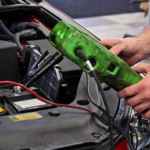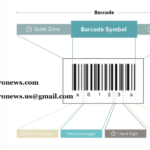In the bustling world of retail, the perfume industry stands as a symbol of luxury, sophistication, and personal expression. From designer fragrances to niche creations, the allure of a signature scent transcends cultures and generations.
Behind the glamorous facades of perfume bottles lies a complex network of production, distribution, and retailing, where efficiency and authenticity are paramount. In this digital age, barcode technology emerges as a silent yet indispensable force shaping the landscape of the perfume industry.
This article delves into the multifaceted role of barcode systems, known as codigo de barra perfume, in revolutionizing various aspects of perfume production, distribution, and retailing.
The Evolution of Barcode Technology:
The humble barcode, originally developed in the late 1940s, has undergone a remarkable evolution since its inception. Initially used for inventory management in the retail sector, barcodes have evolved into sophisticated systems capable of encoding vast amounts of information in a compact format.
In the perfume industry, barcode technology has become ubiquitous, with codigo de barra perfume being an integral part of every stage of the product lifecycle.
Barcode Applications in Perfume Manufacturing:
In the realm of perfume manufacturing, efficiency and precision are crucial for maintaining product quality and meeting consumer demand.
Barcode technology streamlines various manufacturing processes, from raw material sourcing to product assembly. By affixing barcodes to ingredients and components, manufacturers can track inventory levels in real-time, ensuring timely replenishment and minimizing production delays.
Read Also: SSIS 816
Moreover, codigo de barra perfume facilitates quality control by enabling automated inspection of ingredients and finished products, thereby reducing the risk of defects and ensuring consistency in scent profiles.
Enhancing Supply Chain Visibility:
The global nature of the perfume industry necessitates a robust supply chain infrastructure capable of spanning multiple continents. Barcode technology plays a pivotal role in enhancing supply chain visibility and transparency, allowing stakeholders to track the movement of goods from production facilities to distribution centers to retail outlets.
With codigo de barra perfume embedded in packaging and shipping labels, logistics operators can accurately scan and record each shipment’s whereabouts, enabling efficient inventory management and order fulfillment.
Barcode Integration in Retail Operations:

At the retail level, barcode technology revolutionizes the shopping experience for consumers and retailers alike. With the proliferation of point-of-sale (POS) systems equipped with barcode scanners, transactions become swift and seamless, reducing waiting times and improving customer satisfaction.
Read More: PossiblyEthereal
For retailers, codigo de barra perfume enables accurate inventory management and sales tracking, empowering data-driven decision-making and optimizing product assortment strategies. Additionally, barcodes facilitate promotional activities such as loyalty programs and promotional pricing, enhancing customer engagement and driving sales.
Protecting Against Counterfeiting:
Counterfeiting poses a significant threat to the perfume industry, undermining brand reputation and revenue streams. Codigo de barra perfume serves as a powerful tool in the fight against counterfeiting by enabling product authentication and traceability.
By implementing unique barcode identifiers on packaging, brands can verify the authenticity of their products and detect unauthorized distribution channels.
Read more article: Mıllıeyt
Moreover, consumers can use barcode scanning apps to validate the legitimacy of their purchases, fostering trust and loyalty towards authentic brands.
Challenges and Future Outlook:
While barcode technology offers numerous benefits to the perfume industry, challenges remain in terms of standardization, interoperability, and data security. Harmonizing barcode standards across regions and stakeholders is essential to ensure seamless information exchange throughout the supply chain.
Read All Article: Usa pro news
Furthermore, safeguarding barcode data from cybersecurity threats is paramount to protecting sensitive information and maintaining consumer trust. Looking ahead, advancements in barcode technology, such as RFID integration and blockchain-based authentication, hold promise for further enhancing the efficiency and security of perfume industry operations.
Conclusion:
In conclusion, codigo de barra perfume represents more than just a series of black and white lines on packaging—it symbolizes the convergence of technology and tradition in the timeless art of perfumery.
From the fragrance laboratories to the retail shelves, barcode technology permeates every facet of the perfume industry, driving efficiency, authenticity, and innovation.
By embracing barcode systems as a cornerstone of their operations, perfume brands can navigate the complexities of the modern marketplace with confidence, ensuring that every bottle of scent tells a story of quality, craftsmanship, and elegance.
FAQs about “Codigo de Barra Perfume”
Q1: What is codigo de barra perfume and how is it used in the perfume industry?
Ans: Codigo de barra perfume refers to barcode technology used in the perfume industry for various purposes such as inventory management, supply chain tracking, and product authentication. It involves encoding information into barcode symbols that can be scanned electronically for data retrieval.
Q2: How does codigo de barra perfume enhance efficiency in perfume manufacturing?
Ans: Barcode technology streamlines perfume manufacturing processes by enabling accurate tracking of ingredients, components, and finished products. It facilitates inventory management, quality control, and production planning, leading to improved efficiency and productivity.
Q3: Can codigo de barra perfume help in combating counterfeit perfumes?
Ans: Yes, codigo de barra perfume plays a crucial role in combating counterfeit perfumes by enabling product authentication and traceability. Brands can implement unique barcode identifiers on packaging to verify product authenticity, while consumers can use barcode scanning apps to detect counterfeit products.
Q4: What are the benefits of using codigo de barra perfume in retail operations?
Ans: Codigo de barra perfume enhances retail operations by enabling swift and accurate transactions, inventory management, and sales tracking. It reduces waiting times at checkout, optimizes inventory levels, and empowers retailers with valuable data insights for decision-making.
Q5: How does codigo de barra perfume contribute to supply chain visibility?
Ans: Codigo de barra perfume enhances supply chain visibility by enabling stakeholders to track the movement of perfumes throughout the supply chain. From production facilities to distribution centers to retail outlets, barcode technology provides real-time information on inventory levels, shipments, and order fulfillment.
Q6: What challenges does the perfume industry face in adopting codigo de barra perfume?
Ans: Challenges in adopting codigo de barra perfume include standardization of barcode formats, interoperability between systems, and data security concerns. Harmonizing barcode standards across regions and safeguarding barcode data from cybersecurity threats are essential for successful implementation.
Q7: How can consumers benefit from codigo de barra perfume in their perfume shopping experience?
Ans: Consumers can benefit from codigo de barra perfume by using barcode scanning apps to access product information, verify authenticity, and participate in loyalty programs. It enhances transparency and trust in the products they purchase, ensuring a seamless and satisfying shopping experience.
Q8: What advancements are expected in codigo de barra perfume technology in the future?
Ans: Future advancements in codigo de barra perfume technology may include integration with emerging technologies such as RFID and blockchain for enhanced authentication and traceability. These innovations aim to further improve efficiency, security, and transparency in the perfume industry.
Q9: How do perfume brands use codigo de barra perfume for marketing purposes?
Ans: Perfume brands can leverage codigo de barra perfume for marketing purposes by incorporating interactive barcode elements in packaging or promotional materials. This may include access to exclusive content, special offers, or interactive experiences that engage consumers and enhance brand loyalty.
Q10: Is codigo de barra perfume applicable only to luxury perfumes, or is it also used in mass-market fragrances?
Ans: Codigo de barra perfume technology is utilized across the entire spectrum of the perfume industry, including luxury, niche, and mass-market fragrances. Regardless of the price point, barcode technology serves as a fundamental tool for optimizing operations and ensuring product authenticity and traceability.





























































































2 thoughts on “The Role and Overview of Barcode Technology in Perfume Industry”